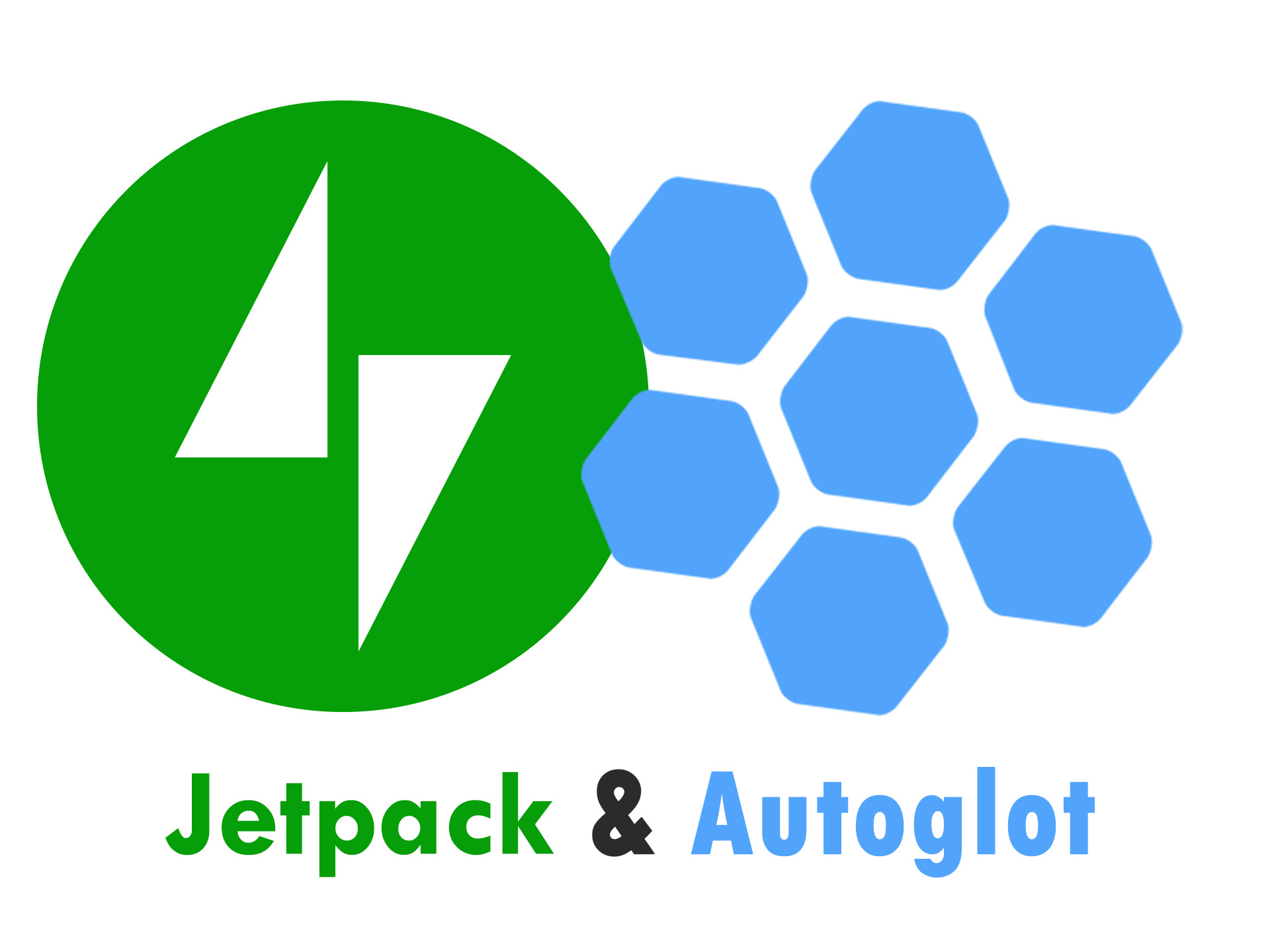
Көп тилдүү веб-сайттар кеңири аудиторияга жетүү жана глобалдык трафикти көбөйтүү үчүн баалуу мүмкүнчүлүк берет. Бир нече тилде мазмунду сунуштоо менен, бизнес ар түрдүү кардар базаларын канааттандырып, көрүнүүнү жана катышууну күчөтөт. Интернет барган сайын глобалдуу болуп бараткандыктан, бир нече тилде баарлашуу мүмкүнчүлүгү веб-сайтты атаандаштарынан айырмалай алат. Натыйжалуу котормо жана веб-сайттын мазмунун локалдаштыруу эл аралык рынокторго олуттуу таасир тийгизүү үчүн абдан маанилүү.
Киришүү: Көп тилдүү веб-сайттардын пайдасы
Көп тилдүү веб-сайттардагы SEO ролу
Search Engine оптималдаштыруу (SEO) эл аралык трафикти тартууда маанилүү ролду ойнойт. SEO веб-сайттын издөө системалары тарабынан табылышын камсыздайт, бул сайтка көбүрөөк конокторду тартууга жардам берет. Көп тилдүү веб-сайттарга келгенде, SEO стратегиялары ар бир тилге жана рынокко жекече ылайыкташтырылышы керек. Бул веб-сайттын мазмунун гана эмес, ошондой эле барактын аталыштары, мета тегдери жана сайт карталары сыяктуу маанилүү SEO элементтерин которууну камтыйт. Бул SEO компоненттеринин туура котормосу болбосо, көп тилдүү веб-сайт ар бир тил үчүн издөө натыйжаларында эффективдүү орун албышы мүмкүн.
JetPack плагинине киришүү
JetPack – бул кеңири спектри менен белгилүү болгон популярдуу WordPress плагини, анын ичинде SEO, коопсуздук жана өндүрүмдүүлүктү оптималдаштыруу куралдары. Анын негизги функцияларынын бири издөө системаларына веб-сайттын структурасын түшүнүүгө жардам берген XML сайт карталарын түзүү. JetPack ошондой эле кээ бир негизги SEO мүмкүнчүлүктөрүн камсыз кылат, бирок анын ар тараптуу көп тилдүү колдоосу жок. Эл аралык аудиторияга жетүүнү көздөгөн веб-сайттар үчүн JetPackтин SEO элементтерин которуу глобалдык рейтингдерди жакшыртуу үчүн абдан маанилүү. Бул барактын аталыштары, мета сүрөттөмөлөрү жана сайт карталары бир нече тилде жеткиликтүү болушун камсыз кылууну камтыйт.
JetPack менен көп тилдүү SEO башкаруу кыйынчылыгы
JetPackте көп тилдүү SEO башкаруу көйгөйү кол менен жаңыртуулардын зарылдыгы болуп саналат. Ар бир барак которулган сайын, тиешелүү SEO элементтери да которулушу керек жана которулган барактар XML сайт картасына кошулушу керек. Бул процесс абдан көп убакытты талап кылат жана башкаруу кыйын болушу мүмкүн, айрыкча веб-сайт өсүп, көбүрөөк тилдер кошулган сайын. Чектелген ресурстары бар бизнес үчүн, көп тилдүү SEO стратегиясын кол менен жүргүзүү оор жана натыйжасыз болуп калышы мүмкүн.
Чечим: Autoglot Plugin
Бактыга жараша, Autoglot WordPress котормо плагини сыяктуу куралдар бул процесстин көбүн автоматташтыра алат. Autoglot мазмунду жана SEO элементтерин, анын ичинде аталыштарды, мета тегдерди жана сайт карталарын которууну жөнөкөйлөтүп, аны көп тилдүү веб-сайттар үчүн баалуу кошумча кылат.
Autoglot менен веб-сайт ээлери эл аралык SEO аракеттерин иретке келтирип, убакытты үнөмдөйт жана алардын мазмуну глобалдык издөө системалары үчүн толук оптималдаштырылышын камсыздай алышат.
Ошондой эле караңыз: Көп тилдүү SEO: Эсте турган 5 мыкты тажрыйба
Эл аралык SEO мааниси
Эл аралык SEO муктаждыгы
Эл аралык SEO дүйнөлүк аудиторияга жетүү үчүн каалаган веб-сайт үчүн абдан маанилүү. Интернет бири-бири менен тыгыз байланышта болгон сайын, бизнес ар кайсы өлкөлөрдө жана тилдерде колдонуучулар үчүн мазмунун оптималдаштырышы керек. Эл аралык SEO болбосо, веб-сайт өзүнүн катышуусун кеңейтүүнү көздөгөн аймактарда издөө системаларында орун алуу үчүн күрөшүп калышы мүмкүн. Эл аралык SEO бир нече тилди жана рынокту максаттоо менен веб-сайттын көрүнүүсүн жогорулатат жана бүткүл дүйнө боюнча тиешелүү трафикти тартууга жардам берет.
Глобалдык ийгилик үчүн SEO элементтерин которуу
Натыйжалуу эл аралык SEO веб-сайттын мазмунун которууну гана эмес, ошондой эле негизги SEO элементтеринин туура локализацияланышын камсыз кылууну талап кылат. Бул элементтерге баракчалардын аталыштары, мета сүрөттөмөлөрү жана URL структуралары кирет, алардын бардыгы издөө системаларынын рейтинги үчүн абдан маанилүү. Которулган барак аталыштары жана мета тэгдер издөө системалары колдонуучуларга ар кандай тилдерде тиешелүү, локализацияланган маалыматты көрсөтүүнү камсыздайт. Эгер бул элементтер так которулбаса жана оптималдаштырылбаса, издөө системалары веб-сайттын белгилүү бир аймакка же тилге ылайыктуулугун түшүнбөй калышы мүмкүн, бул мүмкүнчүлүктөрдү колдон чыгарып жибериши мүмкүн.
Барак аталыштарынын жана мета тегдердин ролу
Барактын аталыштары жана мета тэгдери веб-сайттын SEO стратегиясынын негизи болуп кызмат кылат. Барактын аталыштары баракты индекстөөдө издөө системалары талдоочу биринчи нерселердин бири жана алар издөө рейтингин аныктоодо чоң роль ойнойт. Ошо сыяктуу эле, мета сүрөттөмөлөрү издөө системасынын колдонуучуларына чыкылдатуу ылдамдыгына таасир этүүчү беттин мазмунунун кыскача корутундусун берет. Көп тилдүү веб-сайттар үчүн, бул SEO элементтери ар бир максаттуу рынокто максималдуу көрүнүүнү камсыз кылуу үчүн барактын ар бир тил версиясына которулушу керек.
Эл аралык SEOдеги сайт карталарынын мааниси
XML сайт карталары эл аралык SEO дагы бир маанилүү компоненти болуп саналат. Сайттын картасы – бул издөө системалары үчүн карта, алар веб-сайттын түзүмүн жана анын барактары кандай байланышта экенин түшүнүүгө жардам берет. Көп тилдүү веб-сайттар үчүн сайттын карталары бардык которулган барактарды жана алардын тил версияларын камтышы керек. Бул которулган барактарды сайттын картасына кошпосо, издөө системалары аларды көрмөксөнгө салып, ар кандай тил базарларында сайттын жалпы жеткиликтүүлүгүн азайтат.
Тилдер боюнча ырааттуулукту камсыз кылуу
Бардык SEO элементтеринин ырааттуулугу күчтүү эл аралык SEO стратегиясын сактоонун ачкычы болуп саналат. Бардык которулган барактар, аталыштар, мета тегдер жана сайттын карталары түпнуска тилдин мазмуну өзгөргөн сайын жаңыртылышы керек. Тийиштүү башкаруу болбосо, карама-каршылыктар пайда болушу мүмкүн, натыйжада SEO начар иштешине жана сайттын ар кандай тил версияларында колдонуучу тажрыйбасынын бузулушуна алып келет. Бул жаңыртууларды башкаруунун жөнөкөйлөштүрүлгөн процессине ээ болуу сайттын эл аралык издөө системалары үчүн толук оптималдашуусун камсыздайт.
Эл аралык SEO дүйнөлүк аудиторияга жетүү үчүн абдан маанилүү болуп саналат. Бул барак аталыштары, мета тегдер жана сайт карталары сыяктуу негизги SEO элементтерин которууну жана оптималдаштырууну талап кылат. Бул элементтерди туура башкаруу веб-сайттын көрүнүүсүн жана бир нече тилде издөө рейтингин жогорулатууга жардам берет.
Кененирээк: Көп тилдүү веб-сайт үчүн WordPress баракчасынын аталышын жана мета тегдерин кантип которуу керек?
JetPack плагинине сереп салуу
JetPack деген эмне?
JetPack бул WordPress үчүн ар тараптуу плагин, веб-сайттын иштешин, коопсуздугун жана SEO мүмкүнчүлүктөрүн жакшыртуучу функциялардын топтомун сунуштайт. WordPressтин жаратуучулары Automattic тарабынан иштелип чыккан JetPack веб-сайтты башкаруунун көптөгөн аспектилерин жөнөкөйлөтүү үчүн иштелип чыккан жана аны бардыгы бир чечимди издеген веб-сайт ээлери үчүн жагымдуу вариант кылат. Ал WordPress менен кынтыксыз биригип, оңой орнотууну жана күчтүү куралдарга, анын ичинде аналитикага, коопсуздук сканерлерине жана SEO функцияларына кирүү мүмкүнчүлүгүн сунуштайт.
JetPackтин негизги өзгөчөлүктөрү
JetPack веб-сайттын иштешин жана көрүнүшүн жакшыртуучу бир нече маанилүү функцияларды камсыз кылат. Анын эң көрүнүктүү мүмкүнчүлүктөрүнүн бири XML сайт карталарын автоматтык түрдө түзүү. Бул сайт карталары издөө системаларына веб-сайттын барактарын натыйжалуураак индекстөөгө жардам берип, мазмундун туура табылышын жана рейтингин камсыз кылат. Кошумчалай кетсек, JetPack сүрөттү оптималдаштыруу, сайттын резервдик көчүрмөлөрү жана иштөөсүн жакшыртуу үчүн куралдарды камтыйт, бул аны веб-сайт ээлери үчүн комплекстүү куралга айландырат.
JetPack ошондой эле SEO менен байланышкан бир катар функцияларды, анын ичинде сайттын аталыштарын жана мета сүрөттөмөлөрүн оптималдаштыруу варианттарын сунуштайт. Бул сайттын мазмуну издөө системасынын натыйжаларында көрүнүп турушун жана туура категорияланганын камсыз кылууга жардам берет. Бирок, JetPack маанилүү SEO куралдарын камсыз кылганы менен, ал көп тилдүү веб-сайттарга жергиликтүү колдоо көрсөтпөйт, бул глобалдык SEO аракеттери үчүн анын натыйжалуулугун чектейт.
SEO үчүн JetPackтин артыкчылыктары
JetPack'тин SEO куралдары веб-сайттын көрүнүүсүн жакшыртуу үчүн бекем негиз болуп берет. Барактын аталыштарын, мета сүрөттөмөлөрүн оптималдаштыруу жана сайттын карталарын түзүү менен JetPack веб-сайттын издөө системасынын натыйжалар барактарында (SERPs) катышуусун жогорулатууга жардам берет. Анын автоматтык XML сайт картасын түзүү бардык барактардын камтылышын камсыздайт, бул издөө системаларына мазмунду индексациялоону жеңилдетет. Бул өзгөчөлүк жаңы мазмунду үзгүлтүксүз жарыялап турган веб-сайттар үчүн өзгөчө пайдалуу, анткени ал барактардын жаңыртылган жана ачык болушун камсыздайт.
JetPackтин дагы бир көрүнүктүү артыкчылыгы - бул сүрөттү оптималдаштыруу аркылуу баракчаны жүктөө ылдамдыгын жогорулатуу. Баракты тезирээк жүктөө убакыттары SEO рейтингдериндеги маанилүү фактор болуп саналат, анткени Google сыяктуу издөө системалары издөө натыйжаларын аныктоодо жүктөө убактысын эске алышат. JetPack сүрөттөрдү автоматтык түрдө оптималдаштырып, алардын сапатын бузбастан тез жүктөөсүн камсыздайт.
Көп тилдүү веб-сайттар үчүн JetPackтин кемчиликтери
JetPack баалуу SEO куралдарын камсыз кылганы менен, ал көп тилдүү мазмунду башкарууга келгенде чектөөлөргө ээ. Плагин барак аталыштарын, мета тегдерди же сайт карталарын которууну колдобойт, бул SEO элементтерин бир нече тилдер үчүн оптималдаштырууну кыйындатат. Көп тилдүү сайттар үчүн JetPack колдонгон веб-сайт ээлери котормолорду кол менен башкаруусу керек, бул көп убакытты талап кылат жана ката кетириши мүмкүн, айрыкча веб-сайттын өсүшү менен.
Көп тилдүү веб-сайттар үчүн SEO элементтери үчүн автоматтык котормонун жоктугу олуттуу көйгөй болушу мүмкүн. Вебсайт ээлери сайттын ар бир тил версиясы үчүн аталыштарды, мета тегдерди жана башка SEO элементтерин которуу үчүн көп убакыт жана күч жумшашы керек.
JetPack веб-сайтты оптималдаштыруу үчүн күчтүү функцияларды сунуштайт, анын ичинде SEO куралдары, XML сайт карталары жана сүрөттү оптималдаштыруу. Бирок, анын көп тилдүү SEO менен иштөөдөгү чектөөлөрү аны глобалдык аудиторияга багытталган веб-сайттар үчүн ылайыктуу эмес, өзгөчө кошумча куралдарсыз же кол менен кийлигишпейт.
Кененирээк: Jetpack - WordPress үчүн негизги коопсуздук жана аткаруу
Эл аралык SEO үчүн JetPack Plugin орнотуу
JetPack Plugin орнотулууда
JetPackти колдонууну баштоо үчүн, алгач WordPress сайтыңызга плагинди орнотуп, активдештирүү керек. WordPress панелине өтүп, "Плагиндер" баскычын чыкылдатып, "Жаңы кошууну" тандаңыз. Издөө тилкесинде "JetPack" деп терип, JetPack плагининин жанындагы "Азыр орнотуу" баскычын чыкылдатыңыз. Орнотуу аяктагандан кийин, сайтыңызда JetPack иштетүү үчүн "Активдештирүүнү" чыкылдатыңыз. Активдештиргенден кийин, анын толук спектрин ачуу үчүн JetPackти WordPress.com каттоо эсебине туташтырыңыз керек болот.
JetPack WordPress.com менен туташтырылууда
Жандыруудан кийин, JetPack сиздин WordPress.com каттоо эсебиңизге туташууну талап кылат. Бул JetPack'ке коопсуздукту жакшыртуу, камдык көчүрмөлөр жана SEO куралдары сыяктуу кошумча функцияларды берүүгө мүмкүндүк берет. Сайтыңызды туташтыруу үчүн, "JetPackти туташтыруу" баскычын чыкылдатып, WordPress.com аккаунтуңузга кирүү үчүн экрандагы көрсөтмөлөрдү аткарыңыз. Эгер сизде мурунтан эле каттоо эсеби жок болсо, бул процесстин жүрүшүндө каттоо эсебин түзө аласыз. Туташкандан кийин, JetPack конфигурациялоого даяр.
SEO өзгөчөлүктөрү үчүн JetPack конфигурациялоо
JetPack SEO өркүндөтүү үчүн бир нече функцияларды сунуштайт, аларды орнотуудан кийин конфигурациялоого болот. Куралдар тактаңыздагы JetPack орнотуулар барагына өтүңүз, анда SEO куралдарынын ар кандай варианттарын көрөсүз. Издөө системаларына сиздин сайтыңызды оңой индексациялоого мүмкүндүк берүү үчүн "Сайтты текшерүү" функциясын жана SEO-достук баракчалардын аталыштарын жана мета сүрөттөмөлөрүн башкаруу үчүн "SEO куралдары" опциясын иштетиңиз. Бул өзгөчөлүктөр мазмунуңуздун издөө системаларына көрүнүп, жогорку рейтингдер үчүн оптималдаштырылышын камсыздайт.
XML Сайт картасынын өзгөчөлүгүн иштетүү
JetPack эл аралык SEO үчүн маанилүү болгон автоматтык XML сайт картасынын генераторун камтыйт. XML сайт карталары издөө системаларын сиздин сайттагы бардык барактардын жана билдирүүлөрдүн картасы менен камсыз кылат. Бул функцияны активдештирүү үчүн, JetPack'тин жөндөөлөрүнө өтүп, "Трафик" баскычын чыкылдатыңыз жана "XML Сайт картасы" опциясы иштетилгенин текшериңиз. Бул JetPack'ке жаңы мазмун кошулган сайын же учурдагы мазмун өзгөртүлгөн сайын сайттын картасын автоматтык түрдө түзүп жана жаңыртып турууга мүмкүндүк берет.
Эл аралык SEO орнотуу
Эл аралык SEO үчүн көп тилдүү мүмкүнчүлүктөрдү туура орнотуу керек. JetPack SEO үчүн маанилүү болгон баракчалардын аталыштарын жана мета тегдерин которууну автоматтык түрдө аткарбайт. Мазмунуңуздун ар бир тил версиясында барак аталыштарын, мета сүрөттөмөлөрдү жана башка SEO элементтерин кол менен жаңыртып туруңуз. Бул ар бир барак, пост жана категория бир нече тилде туура индекстелиши үчүн зарыл. Которулган барактарды издөө системалары тарабынан индекстелгендигин текшерүү үчүн JetPack тарабынан түзүлгөн сайттын картасына кол менен кошушуңуз керек болот.
Көп тилдүү SEOдеги JetPackтин ролу
JetPack маанилүү SEO функцияларын камсыз кылганы менен, ал көп тилдүү SEOди толук колдобойт. Көп тилдүү веб-сайт үчүн ар бир которулган барак үчүн беттин аталыштарын, мета сүрөттөмөлөрүн жана сайт карталарын кол менен башкаруу керек болот. Кошумча плагиндерсиз же кол менен кийлигишпестен, JetPack'тин мүмкүнчүлүктөрү гана көп тилдүү SEO тажрыйбасы үчүн жетишсиз.
JetPack орнотуу оңой жана XML сайт карталары сыяктуу маанилүү SEO куралдарын сунуштайт, бирок ал толук көп тилдүү SEO функциясын камсыз кылбайт. JetPack орнотуу SEO куралдарын жана XML сайт карталарын иштетүүнү, ошондой эле сайтыңыздын эл аралык SEO үчүн оптималдаштырылышын камсыз кылуу үчүн которулган баракчалардын аталыштарын жана мета сүрөттөмөлөрүн кол менен жаңыртууну талап кылат.
Ошондой эле караңыз: Jetpack WordPress репозиторий
Эл аралык SEO үчүн баракчалардын аталыштарын, мета тегдерин жана сайттын карталарын которуу
Барактын аталыштарын жана мета тегдерин которуу
Көп тилдүү SEO үчүн, ар бир максаттуу тилде туура индексациялоону камсыз кылуу үчүн барактардын аталыштарын жана мета тегдерин которуу зарыл. Барактын аталыштары жана мета тегдери издөө системалары сиздин мазмунуңуздун рейтингинде жана көрсөтүүдө маанилүү ролду ойнойт. Бул элементтерди которбосо, издөө системалары ар кандай тилдердеги баракчаларыңыздын контекстти туура түшүнбөй калышы мүмкүн, бул издөө системаларынын рейтингине таасир этиши мүмкүн. Барактын аталыштарын жана мета тегдерин которуу үчүн ар бир барак же пост үчүн SEO жөндөөлөрүнө кирип, аталыштар менен сүрөттөмөлөрдүн котормолорун кол менен киргизишиңиз керек.
Ар бир которулган аталышта жана мета тегде тиешелүү ачкыч сөздөрдү колдонуу маанилүү. Которуу учурунда, которулган мазмун жергиликтүү издөө жүрүм-турумуна дал келишине көңүл буруңуз. Издөө системалары тилге тиешелүү ачкыч сөздөр менен оптималдаштырылган мазмунга артыкчылык беришет, бул ар кайсы аймактардагы колдонуучулар үчүн издөө натыйжаларында сиздин сайттын көрүнүүсүн жакшыртат. Ошондой эле аталыштарыңыз жана мета сүрөттөмөлөрүңүз кыска, түшүнүктүү жана ар бир беттеги мазмунду тиешелүү тилде так чагылдырышын камсыз кылууну каалайсыз.
Мазмунду өзгөртүү катары аталыштарды жана мета тегдерди жаңыртуу
Барактын аталыштарын жана мета тегдерин которгондон кийин, баштапкы мазмун өзгөрсө, аларды жаңыртуу зарыл. Эгер барактын мазмуну кандайдыр бир жол менен кайра каралса же өзгөртүлсө, которулган барактын аталыштары жана мета сүрөттөмөлөрү да ошол өзгөрүүлөрдү чагылдыруу үчүн жаңыртылышы керек. Бул SEO элементтерин жаңыртууга көңүл бурбоо издөө натыйжаларында эскирген же туура эмес маалыматтын көрсөтүлүшүнө алып келиши мүмкүн, бул издөө системасынын жөрмөлөгүчтөрү жана колдонуучулар үчүн баш аламандыкка алып келет. Бул процесс так жана оптималдаштырылган мазмунду сактоо үчүн маанилүү болгону менен, айрыкча сиздин сайтыңыз чоңоюп, котормолор көбүрөөк кошулган сайын түйшүктүү болуп калышы мүмкүн.
JetPack'тин XML Сайт картасына которулган баракчаларды кошуу
JetPack XML сайт карталарын түзөт, алар издөө системаларына сиздин мазмунуңузду издөөгө жана индекстештирүүгө жардам берет. Бирок, сиз которулган барактарды кошкондо, алар автоматтык түрдө сайттын картасында көрүнбөйт. Бул барактардын индекстелгендигин камсыз кылуу үчүн, которулган барактарды JetPack сайтынын картасына кол менен кошушуңуз керек. Бул XML сайт картасын кол менен түзөтүүнү же көп тилдүү сайттын картасын башкарууну колдогон плагинди колдонууну билдирет. Которулган барактарды сайттын картасына кошпосо, бул барактар издөө системалары тарабынан байкалбай калышына алып келип, алардын көрүнүүсүн жана жеткиликтүүлүгүн чектейт.
Чоң веб-сайттар үчүн кол менен башкаруу кыйынчылыгы
Беттердин аталыштары, мета тегдери жана сайт карталары үчүн котормолорду кол менен башкаруу, айрыкча, чоңураак веб-сайттар үчүн тез эле оор болуп калышы мүмкүн. Вебсайтыңыз кеңейип, бир нече тилде көбүрөөк барактарды кошкон сайын, которулган мазмунга, аталыштарга жана мета тегдерге көз салуу тапшырмасын башкаруу кыйын болуп калышы мүмкүн. Ар бир жаңы барак, пост жана категория SEO көйгөйлөрүн болтурбоо үчүн сайттын картасында туура которулуп, жаңыртылганын текшеришиңиз керек. Кол менен башкаруунун бул деңгээли адамдын катасынын, өткөрүп жиберилген жаңыртуулардын жана ыраатсыз котормолордун ыктымалдыгын жогорулатып, акыры SEO көрсөткүчүңүзгө таасирин тийгизет.
Autoglot менен процессти автоматташтыруу
Барактын аталыштарын, мета тегдерин жана сайт карталарын которууну автоматташтыруу үчүн Autoglot колдонуу процессти кыйла жөнөкөйлөтөт. Autoglot бул SEO элементтерин негизги беттин мазмуну менен бирге автоматтык түрдө которуп, бардык тилдерде ырааттуулукту камсыз кылат. Кошумчалай кетсек, Autoglot бардык которулган баракчаларды, постторду, категорияларды жана тегдерди камтуу үчүн JetPackтин XML сайт картасын үзгүлтүксүз жаңыртат. Бул кол менен жаңыртуулардын зарылдыгын жок кылат, убакытты үнөмдөйт жана каталардын рискин азайтат. Бул процессти автоматташтыруу менен, Autoglot сиздин көп тилдүү SEO стратегияңыздын эффективдүү жана эффективдүү болушун камсыздайт.
Барактын аталыштарын, мета тегдерин которуу жана сайттын карталарын башкаруу эл аралык SEO үчүн негизги элементтер болуп саналат, бирок алар кол менен кийлигишүүнү талап кылат, бул көп убакытты жана ката кетириши мүмкүн. Autoglot сыяктуу чечимди колдонуу бул тапшырмаларды автоматташтыра алат, так котормолорду жана бир нече тилде SEO башкарууну жөнөкөйлөтөт.
Ошондой эле караңыз: Которулган баракчаларды WordPress сайттын картасына кантип кошуу керек?
Эл аралык SEO үчүн Autoglot Plugin колдонуу
SEO элементтерин автоматтык которуу
Autoglot Jetpack ичиндеги SEO элементтерин которуу үчүн жөнөкөйлөштүрүлгөн чечимди сунуштайт, анын ичинде барактын аталыштары, мета тегдери жана сайт карталары. Көп тилдүү веб-сайттарды башкаруудагы негизги көйгөйлөрдүн бири - аталыштар, сүрөттөмөлөр жана ачкыч сөздөр сыяктуу SEO элементтеринин так которулушун камсыз кылуу. Autoglot менен бул SEO элементтери автоматтык түрдө негизги беттин мазмуну менен бирге которулат. Бул бардык критикалык метадайындардын ар бир максаттуу тилде издөө системалары үчүн туура локализацияланышын камсыздайт, бул сиздин веб-сайтыңыздын SEO ишин глобалдык деңгээлде жакшыртат.
Autoglot автоматтык түрдө барак аталыштарын, мета сүрөттөмөлөрдү жана башка SEO негизги элементтерин которот. Ар бир SEO элементин кол менен которуу зарылдыгын алып салуу менен, Autoglot баалуу убакытты үнөмдөйт жана каталардын ыктымалдыгын азайтат. Бул котормолор ар бир барактын мазмуну менен синхрондолуп, алардын конкреттүү тилге жана аймакка дал келүүсүн жана актуалдуулугун сактайт. Бул автоматташтыруу мазмун өзгөргөн сайын кол менен жаңыртуунун кереги жок, бардык тилдер боюнча SEO стратегияңыздын ырааттуулугун сактоого жардам берет.
JetPack сайтынын картасы менен үзгүлтүксүз интеграция
Autoglot сиздин сайттын картасына которулган барактарды автоматтык түрдө кошуу менен JetPackтин XML сайт картасынын өзгөчөлүгүн жакшыртат. Сиз ар кандай тилдерде жаңы баракчаларды же постторду кошкондо, Autoglot бул которулган версияларды камтуу үчүн JetPack'тин XML сайт картасын жаңылайт. Бул издөө системалары сиздин көп тилдүү мазмунуңузду кол менен кийлигишүүнү талап кылбастан, оңой сойлоп, индекстешин камсыздайт. Которулган барактарды сиздин сайттын картасына кошууну автоматташтыруу менен, Autoglot сиздин эл аралык SEO аракеттериңизди JetPack'тин күчтүү сайт картасы функционалдуулугу менен кемчиликсиз интеграциялоону камсыздайт.
XML сайт картасына которулган барактарды автоматтык түрдө кошуу сиздин бардык мазмунуңуздун туура индекстелишине кепилдик берет. Бул функция болбосо, сиз мазмунду кошкон сайын же которгон сайын сайттын картасын кол менен жаңыртып турушуңуз керек болот. Бул бир гана убакытты талап кылбастан, ошондой эле издөө системалары тарабынан индекстелген маанилүү барактарды жоготуп алуу коркунучун жогорулатат. Autoglot бул маселени бүт процессти автоматташтыруу менен жок кылат, бул сизге сайтыңыздын өсүшүнүн башка аспектилерине көңүл бурууга мүмкүндүк берет, ошол эле учурда күчтүү эл аралык SEO катышуусун сактап турат.
Көп тилдүү сайттар үчүн убакытты үнөмдөөчү автоматташтыруу
Autoglot автоматташтыруу көп тилдүү SEO башкаруу үчүн талап кылынган убакытты жана күч-аракетти бир топ кыскартат. SEO элементтери жана сайт карталары үчүн котормолорду иштетүүнүн салттуу ыкмалары, айрыкча, веб-сайтыңыз чоңойгон сайын, өтө оор болушу мүмкүн. Autoglot менен ар бир барактын мета тегдерин, аталыштарын кол менен жаңыртуунун же сайттын картасына которулган барактарды кошуунун кереги жок. Бул автоматташтырылган ыкма сиз сайтка жаңы мазмунду же тилдерди кошкондо да, көп тилдүү SEO стратегияңызды эффективдүү масштабда колдонууга мүмкүндүк берет.
Автоглоттун убакытты үнөмдөөчү өзгөчөлүктөрү аны чоң, көп тилдүү веб-сайттар үчүн идеалдуу чечим кылат. Сайтыңыз кеңейген сайын, ар бир тил үчүн SEO кол менен башкаруу атайын командасыз иштебей калышы мүмкүн. Autoglot бул тапшырмаларды автоматтык түрдө аткарып, веб-сайтыңыздын өсүшүнүн жана мазмунун түзүүнүн башка аспектилери үчүн ресурстарды бошотот. Бул сиздин эл аралык SEO аракеттериңизди кол менен тейлөө түйшүгү жок ырааттуу жана эффективдүү бойдон калууга кепилдик берет.
Autoglot SEO элементтерин автоматтык түрдө которуу менен барактын аталыштары, мета тегдери жана JetPackтин XML сайт картасын жаңыртуу аркылуу эл аралык SEO башкаруу процессин жөнөкөйлөтөт. Бул убакытты үнөмдөөчү автоматташтыруу сиздин көп тилдүү мазмунуңуздун туура индекстелгендигин жана издөө системалары үчүн оптималдаштырылышын камсыздайт, бул сизге күчтүү глобалдык катышууну сактоого жардам берет.
Кененирээк: WordPress үчүн которуу процессин кантип автоматташтыруу керек?
Корутунду
Көп тилдүү SEO башкаруу татаал маселе болушу мүмкүн, бирок туура куралдар менен, ал алда канча натыйжалуу жана натыйжалуу болуп калат. Барактын аталыштарын, мета тегдерин которуу жана сайт карталарын башкаруу веб-сайтыңыздын ар кандай тилдерде туура индекстелиши жана оптималдаштырылышы үчүн абдан маанилүү. Кол менен котормо ыкмалары кичинекей веб-сайттар үчүн иштеши мүмкүн, бирок сайтыңыз чоңойгон сайын алар тез эле басымдуу жана катага жакын болуп калышат.
- Autoglot SEO элементтеринин котормосун автоматташтыруу үчүн үзгүлтүксүз чечимди сунуштайт, бул процессти тезирээк жана каталарга азыраак кабыл алат. Барактын аталыштарын, мета тегдерин жана JetPack'тин XML сайт картасына жаңыртууларды которууну автоматташтыруу менен, Autoglot көп тилдүү SEO башкаруу үчүн талап кылынган убакытты жана күчтү бир топ кыскартат. Бул автоматташтыруу сиздин бардык которулган мазмунуңуздун ырааттуу, так жана издөө системалары үчүн толук оптималдашуусун камсыздайт, бул сиздин рейтингиңизди дүйнөлүк деңгээлде жакшыртууга жардам берет.
- Автоглотту колдонуу убакытты үнөмдөп эле койбостон, көп тилдүү SEO стратегияңыздын масштабдуу болушун да камсыздайт. Вебсайтыңыз кеңейген сайын, Autoglot көп тилдүү SEOдин өсүп жаткан талаптарын чечип, бир нече тилде мазмунду башкарууну жеңилдетет. SEO элементтерин жаңыртуу жана сайттын карталарына барактарды кошуу боюнча кол жумушун жок кылуу менен, Autoglot веб-сайтыңыздын өсүшүнүн башка маанилүү аспектилерине көңүл бурууга мүмкүндүк берет.
Жыйынтыктап айтканда, эл аралык аудиторияга багытталган веб-сайттар үчүн Autoglot сыяктуу чечимге инвестиция салуу баа жеткис. Бул котормо процессин тартипке келтирүүгө, издөө системасынын натыйжаларында веб-сайтыңыздын көрүнүүсүн жакшыртууга жана кол менен жаңыртуулардын татаалдыгысыз натыйжалуу SEO стратегиясын сактоого жардам берет. Autoglot эл аралык SEO үчүн натыйжалуураак, катасыз жана масштабдуу ыкманы камсыздайт, бул сиздин көп тилдүү веб-сайтыңыздын глобалдык издөө рейтингдеринде атаандаштыкка жөндөмдүү бойдон калышын камсыз кылат.



